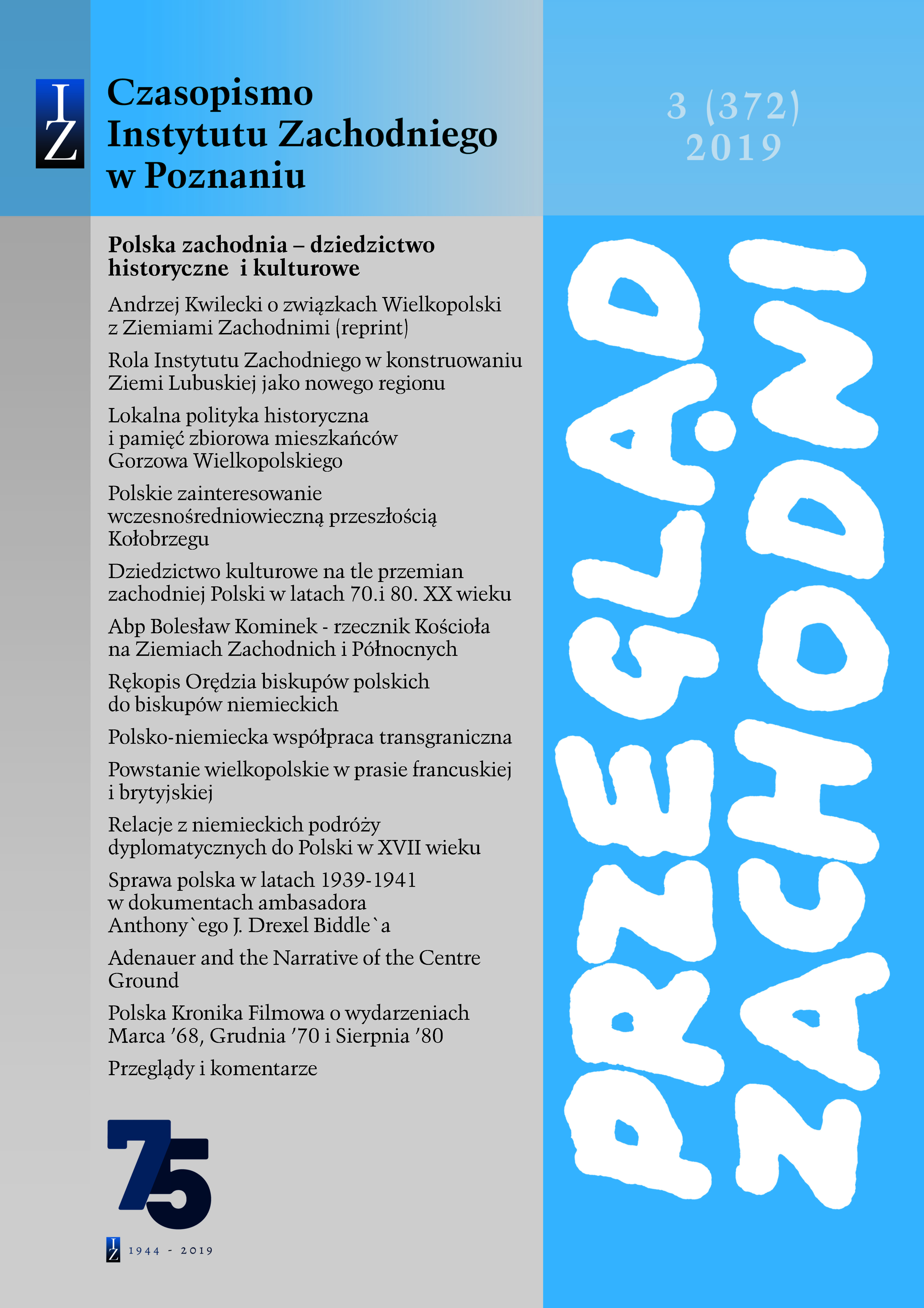Między Nową Marchią a Wołyniem. O lokalnej polityce historycznej i pamięci zbiorowej mieszkańców Gorzowa Wielkopolskiego
Between Neumark and Volhynia. On the local historical policy and collective memory of the inhabitants of Gorzów Wielkopolski
Author(s): Krzysztof WasilewskiSubject(s): Local History / Microhistory
Published by: Instytut Zachodni im. Zygmunta Wojciechowskiego
Keywords: collective memory;Gorzów Wielkiopolski;memory politics;identuty;migrations
Summary/Abstract: The objective of the study is analysis of the collective memory of the inhabitants of Gorzów Wielkopolski – one of the two capital cities of the Lubusz Voivodship. Due to its border location, as well as an ethnically and culturally complex social structure, this city is an interesting case study of the formation of historical awareness on a local scale. The scientific problem involves the study of selected places of remembrance, historical policy of the local government and media discourse. The article is limited to the presentation of the most important places of memory, the analysis of the historical policy of the local government, and also examines the local discourse relating to historical figures and events of the past. Thanks to this, two foundations of collective memory of the contemporary inhabitants of Gorzów Wielkopolski have been determined. The first is a sense of continuity between the history of German Landsberg and the Polish Gorzów. The grassroots actions of regionalists and the systematic policies of the local government led to the „recovery” for the public sphere of this part of local history, which remained marginalized during the period of the Polish People’s Republic. The second foundation is the so-called eastern borderland history, which has been gaining importance in local collective memory for several years. The author puts forward the hypothesis that the case of Gorzów and the collective memory of its inhabitants shows the interpenetration of many levels: the private and public sphere, the grassroots activity and policies of the local government, the functioning of the media, or finally the local specificities and the activity of the central institutions, and in the case of this border region also of foreign institutions. For this purpose, the following methods were used, among others: historical method, descriptive method, analysis of discourse. The main part of the article is preceded by theoretical considerations on collective memory and its carriers and a characterization of the history of Gorzów, particular attention being paid to the groundbreaking year 1945 and its consequences for the contemporary city.
Journal: Przegląd Zachodni
- Issue Year: 372/2019
- Issue No: 03
- Page Range: 37-54
- Page Count: 18
- Language: English, Polish

